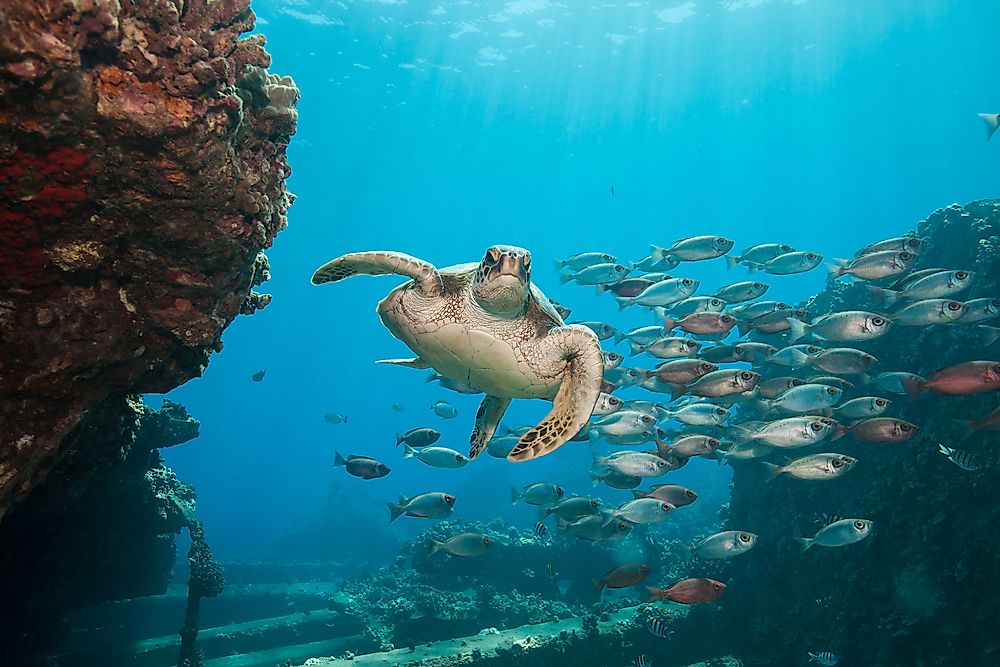What and Where Is Papahanaumokuakea?

The Papahanaumokuakea is a huge remote cluster of small islands and coral reefs surrounding the Pacific Ocean in Hawaii. Not only is it the largest conservation area in the US jurisdiction, it is also the largest marine conservation area in the world covering 583,000 square miles of the Pacific waters.
History
The name Papahanaumokuakea was adopted in commemoration of two Hawaiian ancestors Papahanaumoku and Wakea, from whom the Hawaiian Archipelago, Hawaiian people, and the taro plant descended. In their creation stories, native Hawaiians believed that the oldest non-human ancestor is the coral polyp from which all other living forms of nature originated. The native Hawaiian people believe that the Papahanaumokuakea is the place where all life springs and a home where spirits return to after death. The place has been reserved due to its rich marine and cultural heritage. Due to this kinship, the Papahanaumokuakea was preserved to remind humans that there needs a peaceful coexistence between them and nature.
Habitat
The monument’s vast coral island support over 7,000 endemic and endangered marine species. Many of the Islands and shallow waters are home to prominent species such as the endangered Hawaiian monk seals, whales, dolphins, sea turtles, sharks, billfish, and tuna. There are 14 million seabirds of which twenty-two species breed and nest there and four ducks species including the world’s most endangered Laysan duck only found in the region. The harvesting of lobsters has been banned in the region following their decline after massive harvesting in the 1990s.
Conservation
Papahanaumokuakea was declared a conservation site in 2006 by President George Bush and it was declared a UNESCO World Heritage Site in 2008. In 2016, President Barrack Obama expanded the monument by almost four times making it the largest marine conservation. The aim of the conservation area is to protect and enhance the ecological integrity, biodiversity and cultural legacy of marine areas over 600,000 square miles.
Threats
The remoteness of the Papahanaumokuakea and the stringent conservation laws have played a key role in the robust management of the marine park. Albeit keeping development projects off the Papahanaumokuakea, marine debris poses a major threat to the marine ecosystem threatening the survival of turtles, seabirds, and coral reef organisms. Past activities in the region especially at French Frigate Shoals, Kure Atoll, and Midway Island led to the contamination of surrounding marine regions with lead and mercury leading to the death and extinction of various species.











